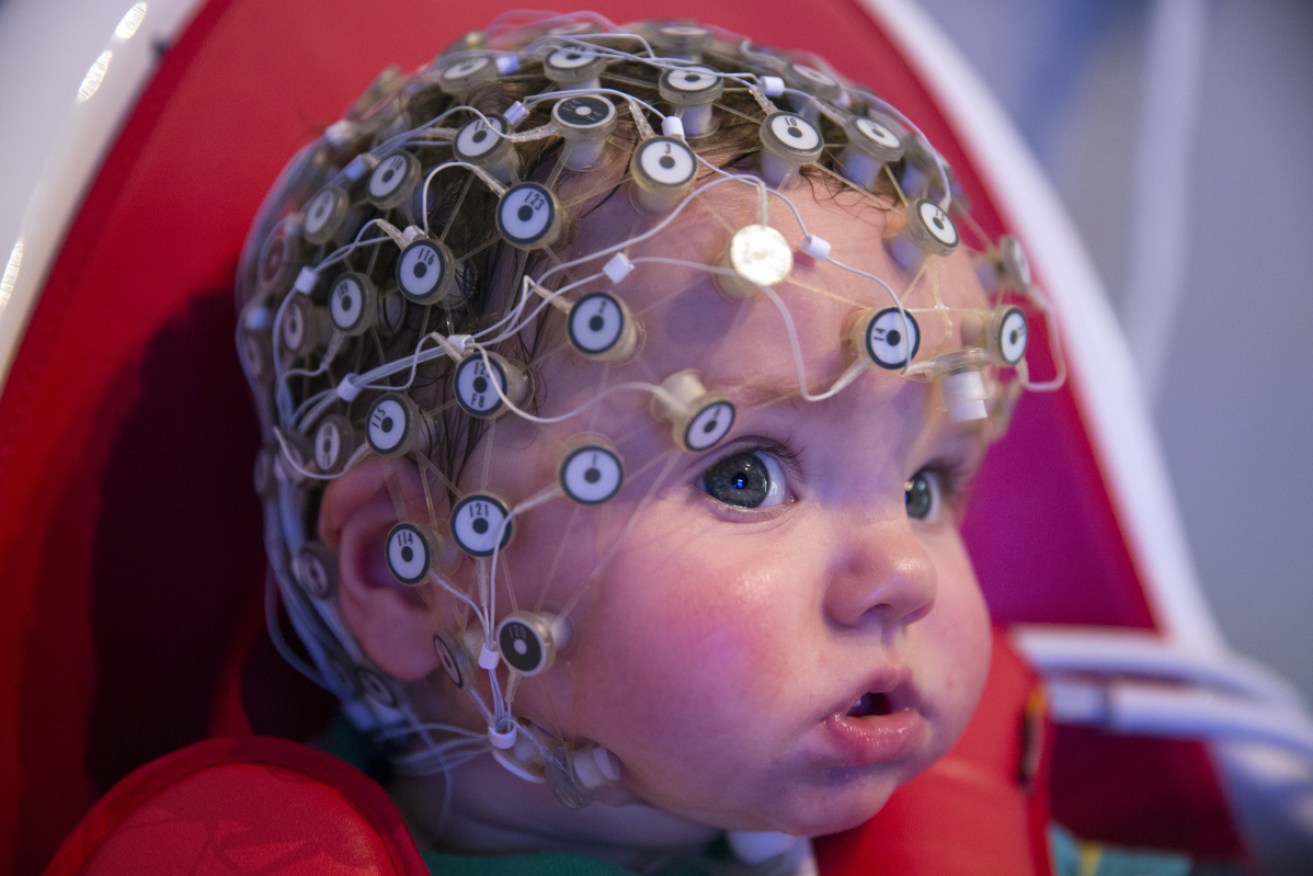‘Baby’ brains made in the lab: Even scientists behind the breakthrough are astonished


In a world first, mini brains created from stem cells have generated similar electrical activity to that found in preterm babies. The baby pictured here wasn't a premmie. Very cute but. Photo: Getty
Scientists have created miniature brains in a petri dish that generate similar electrical patterns to those generated by premature newborn babies – so similar in fact that a machine-learning algorithm can’t distinguish between them.
Mini brains – or more formally, brain organoids – are commonly used in research to study various aspects of human brain development and function, tease apart at a molecular level brain-events that lead to disease, and to test new drugs.
Until now, though, brain organoids – the size of a pea, and grown from stem cells – hadn’t grown sophisticated neural networks of a type found in fully-grown brains. In fact, until now it wasn’t thought possible.
Even the scientists were surprised
“We couldn’t believe it at first — we thought our electrodes were malfunctioning,” said co-senior author Dr Alysson Muotri, professor of paediatrics and cellular and molecular medicine at University of California San Diego School of Medicine.
“Because the data were so striking, I think many people were kind of sceptical about it, and understandably so.”
Dr Muotri led the study with Dr Bradley Voytek, associate professor of cognitive science in the UC San Diego Division of Social Sciences.
According to a statement from the university, Dr Muotri’s team previously used brain organoids to produce the first direct experimental proof that the Brazilian Zika virus can cause severe birth defects, and also to re-purpose existing HIV drugs for a rare, inherited neurological disorder.
Dr Muotri and team also “recently sent their brain organoids to the International Space Station to test microgravity’s effect on brain development — and maybe prospects for human life beyond Earth.”
No Frankenstein’s monsters
Dr Muotri has been asked, more than once, if we’re getting too close to re-creating the human brain in the lab. He says this latest generation of brain organoids will lead to work of a more modest scope – perhaps study mental illnesses “that aren’t caused by or result in overt physiological changes, but instead involve disturbances in brain cell network activity, such as autism or epilepsy”.

The mini brains are the size of peas and generated from stem cells. Photo: Dr Alysson Muotri
To achieve what was thought impossible – brain waves from a clump of cells in a petri dish – Dr Muotri and colleagues say they optimised every step of brain organoid construction.
For example, they started from single cells, rather than the clumps of cells used in most protocols. They also tweaked the precise timing and concentration of factors added to prompt brain cell organisation.
He said the optimisation paid off in terms of cellular diversity and cellular network activity. For example, the team detected a particular primate-specific neuron, called a cortical GABAergic neuron, that had never before been generated in a lab dish. According to Muotri, these cells are important players in the sophistication of neural networks.
To measure cellular network activity, the researchers grew their brain organoids on tiny devices that contained thousands of micro-electrodes – these capture and record electrical impulses, which appear as patterns of waves and spikes in an EEG read-out.
Patterns of brain activity matched those of babies
In humans, oscillations change with age, as brain cell connectivity develops. Newborn baby brains tend to have periods of rest (no waves) between spikes of electrical activity. Those quiet periods get shorter and shorter as the brain develops. In time, brain activity becomes constant, though levels vary.
Dr Muotri and team compared their brain organoid electrical patterns to a publicly available dataset of 567 EEG recordings from 39 babies born prematurely, between 24 and 38 weeks gestation, and for several weeks after birth. From their initial days to nine months, the brain organoids produced similar levels of electric activity, following a similar pattern: less quiet time, more frequent electrical impulses.
All of which is pretty spooky – but it’s a long way for these mini brains to demonstrate cognitive activity.
“These brain organoids dramatically differ from human brains in many ways,” Dr Muotri said.
“For example, they are several times smaller than an adult human brain. They do not have hemispheres or blood vessels. And they are not surrounded by protective skulls or connected to other tissues.
“They are far from being functionally equivalent to a full cortex, even in a baby. In fact, we don’t yet have a way to even measure consciousness or sentience.”








